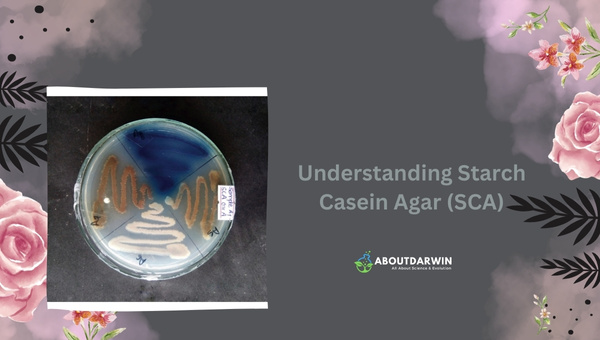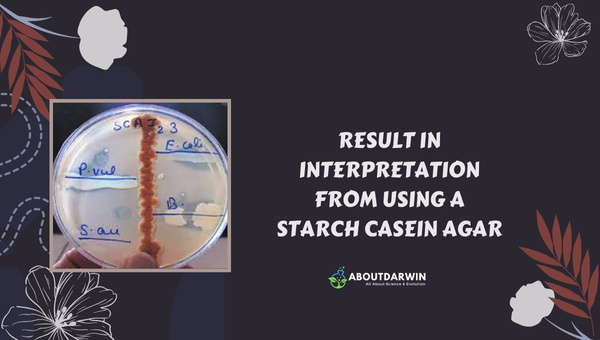Physical Address
304 North Cardinal St.
Dorchester Center, MA 02124
Welcome to your comprehensive resource on everything you need to know about Starch Casein Agar (SCA)! This guide has been designed to effortlessly walk you through a complex scientific topic, turning it into something understandable and enjoyable.
We will dive deep into what SCA is, its components, and practical uses and guide you step by step on how to prepare it.
Starch Casein Agar (SCA) is an incredibly versatile material used extensively in microbiological research. It’s a medium that facilitates the growth of various microorganisms due to its rich nutrient composition. Understanding how SCA works can help you apply this knowledge in labs or even innovate for newer uses of this multipurpose medium.
Contents
Starch Casein Agar (SCA) is a nutrient-rich medium commonly used in microbiology. Its primary purpose is for the harnessing of microbes capable of producing secondary metabolites, which are compounds such as antibiotics.

SCA encourages the growth of these organisms by supplying them with starch and casein as sources of energy to produce these beneficial compounds.
Also Read: Unlock DNA Discoveries: Free DNA Upload Websites Guide
The composition of Starch Casein Agar primarily includes soluble starch, casein, potassium phosphate, magnesium sulfate, sodium chloride, and agar.
These ingredients play vital roles in aiding bacterial growth and, therefore, are used in microbial research or studies.
Each element serves a unique role, most particularly;
The fundamental principle behind Starch Casein Agar revolves around its function as a medium for the growth of certain organisms.
The ingredients used in SCA provide the necessary nutrients required for these microorganisms to thrive. This, in turn, allows for further testing and analysis.
Understanding the science behind SCA is crucial in grasping how it operates to provide a conducive environment for microbial growth.
Also Read: Unraveling Staphylococcus epidermidis: Biochemical Tests & ID
Starch Casein Agar (SCA) is a versatile and effective medium, extensively used in diverse fields due to its unique properties.
From microbiology labs to industrial setups, the applications of SCA are wide-ranging. Below, we delve into some of these practical applications.
The use of Starch Casein Agar isn’t restricted to a specific domain; rather, it has found applications in various scenarios:
Also Read: Haemolysis in Streptococci: Types and Health Impact
Preparing your own Starch Casein Agar at home isn’t as hard as you might think. With careful planning and the right products, you can schedule a high-quality SCA in no time. Let’s guide you through each step in detail.
Remember, precise measurements are crucial when creating SCA– inaccurate amounts of each ingredient could potentially spoil results.
Interpreting results from using Starch Casein Agar (SCA) involves careful observation of changes in the medium following its exposure to a sample.

This typically includes changes in color, the appearance of colonies, and other observable alterations. In this section, we will discuss how to read outcomes correctly and address potential issues during interpretation.
The actual interpretations are subject-specific; for example:
| Indicator | Positive Result | Negative Result |
|---|---|---|
| Colour change | Color intensifies: Indicates microorganism metabolizing substance. | No Change: Medium not affected |
| Growth Patterns | Visible colonies appear: Indicates reproduction activity if expected organisms. | No visible change: Lack of expectant microbial activity |
| Bed Transparency | Becomes cloudy or opaque: Indicates bacterial digestion action on the material. | Remains transparent/clear: Lack of microbial digestion. |
Also Read: A Close Look at Mold and Yeast: Deciphering the Differences
Starch is a chain of glucose molecules that are bound together to form a bigger molecule, which is called a polysaccharide.
4 Starch agar Make a paste containing 1 g of soluble starch in 10 cm3 of hot water. Add 1.5 g of agar, stir well, and slowly add more water while stirring until the volume is 100 cm3. Heat in a boiling water bath to 95 °C in the required container.
A casein-agar plate assay was used for the quantitative determination of both mesophilic and thermophilic proteases.
In order to interpret the results of the starch hydrolysis test, iodine must be added to the agar.
Starch Casein Agar (SCA) is used for the detection of saccharolytic marine bacteria and mostly actinomycetes.
Also Read: Distinguishing S. pneumoniae and Viridans Streptococci
In conclusion, the Starch Casein Agar (SCA) is a comprehensive and indispensable tool in the field of microbiology. Its versatility in isolating and promoting microbial growth underpins its numerous applications spanning across labs, hospitals, and research facilities.
It is vital to comprehend the composition principles behind its design and skilfully interpret results for optimal use.
By adhering to best practices during its preparation and being mindful of potential interpretation issues, users can harness maximal benefits from SCA as an invaluable asset within microbiological disciplines.